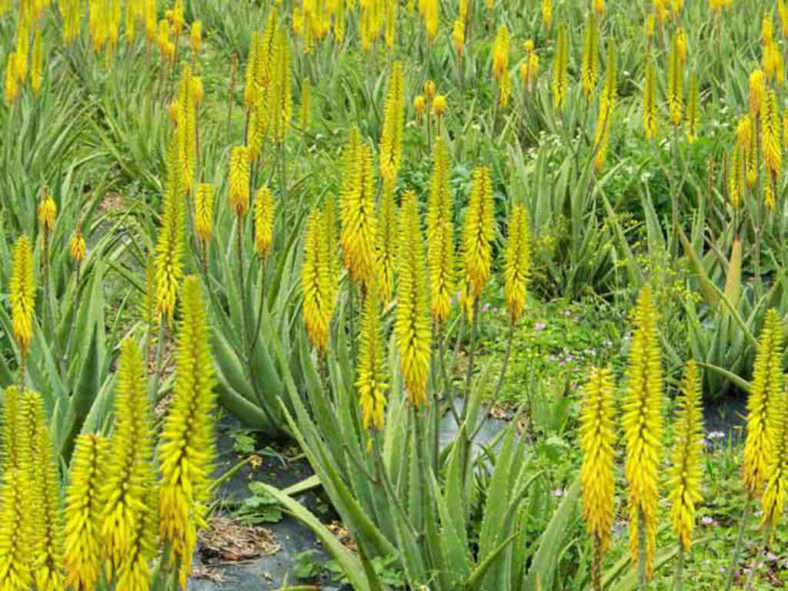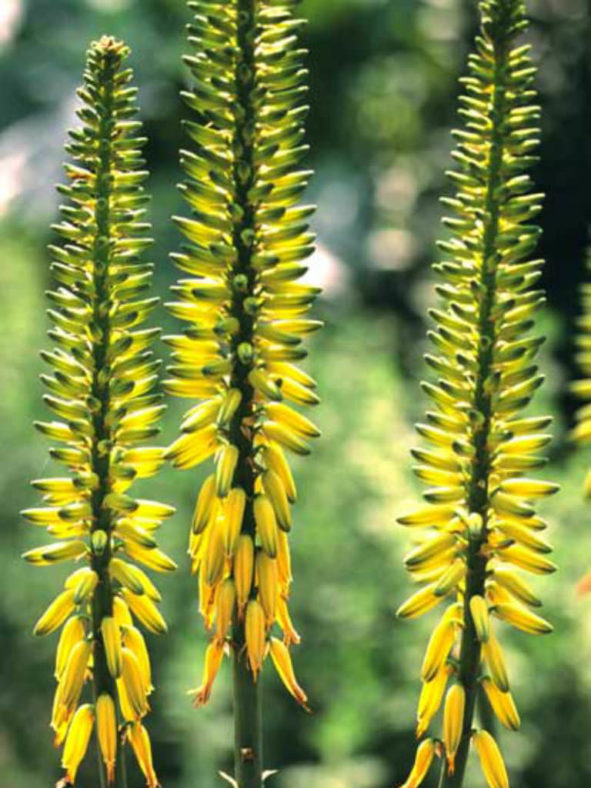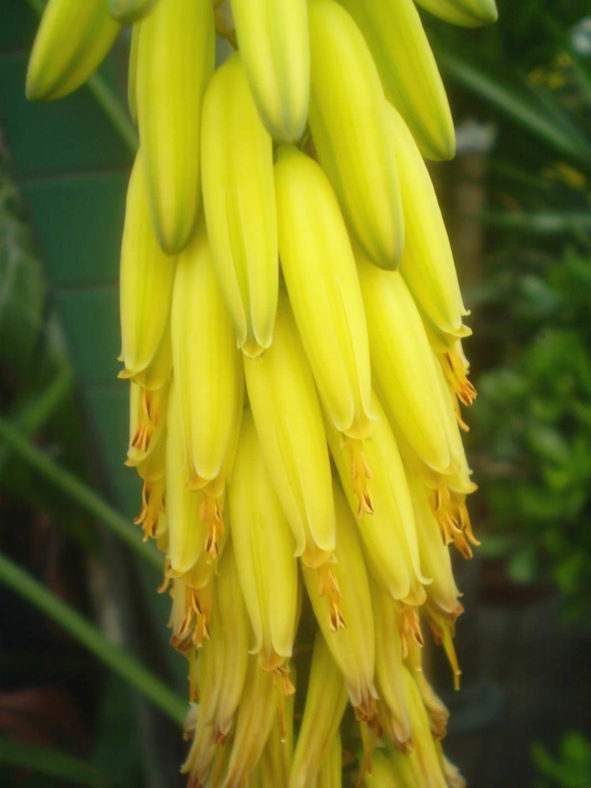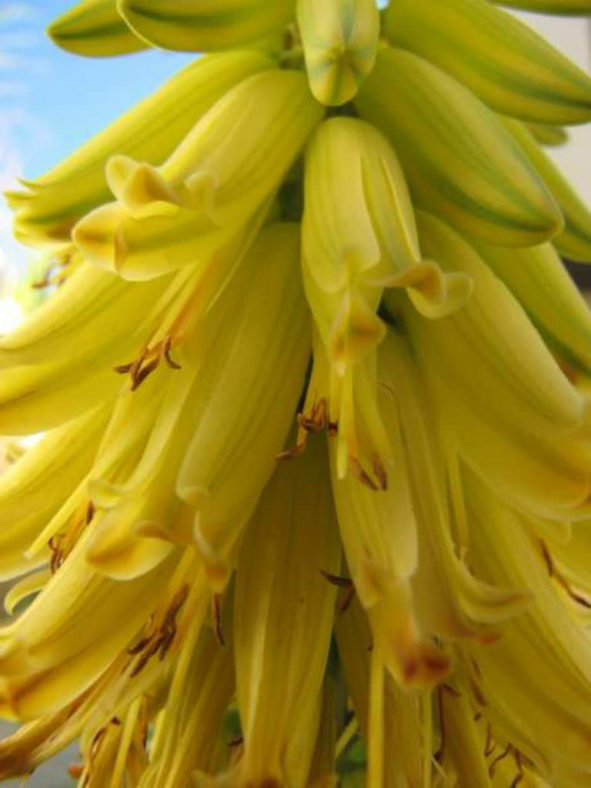Scientific Name
Aloe vera (L.) Burm.f.
Common Name(s)
Aloe Vera, Medicinal Aloe, Barbados Aloe, Chinese Aloe, Indian Aloe, Medicine Plant, True Aloe, Burn Aloe, First Aid Plant, Bitter Aloe, Wand of Heaven, Miracle Plant, Savila
Synonym(s)
Aloe vulgaris, Aloe vera var. lanzae, Aloe indica, Aloe barbadensis var. chinensis, Aloe elongata, Aloe vera var. littoralis, Aloe perfoliata var. vera, Aloe perfoliata var. barbadensis, Aloe flava, Aloe chinensis, Aloe barbadensis, Aloe lanzae
Scientific Classification
Family: Xanthorrhoeaceae
Subfamily: Asphodeloideae
Genus: Aloe
Origin
Aloe vera is native to the arid regions of the northeastern and southern parts of Africa and Madagascar.
Flower
Color: Yellow
Bloom Time: Summer
Description
Aloe vera is a stemless or very short-stemmed succulent plant that grows up to 39 inches (100 cm) tall, spreading by offsets. Leaves are thick and fleshy, green to grey-green, with some varieties showing white flecks on the upper and lower stem surfaces. The margins of the leaf are serrated and have small white teeth.
The flowers are produced in summer on an up to 35 inches (90 cm) tall spike, each flower being pendulous, with a yellow tubular, up to 1.2 inches (3 cm) long corolla.

How to Grow and Care
The first step in Aloe Vera care is to realize that this plant is a succulent. Like cacti, succulents do best in dry conditions. When growing plants, plant them in a cactus potting soil mix or a regular potting soil that has been amended with additional perlite or building sand. Also, make sure that the pot has plenty of drainage holes. It cannot tolerate standing water. One important thing in the care of Aloe Vera houseplants is that they have proper light. They need bright light, so they do best in the south- or west-facing windows. Another important part of growing an Aloe Vera is properly watering the plant. The soil should be allowed to go completely dry before being watered. When the plant is watered, the soil should be thoroughly drenched, but the water should be allowed to drain freely from the soil.
See more at How to Grow and Care for Aloe.
Uses
Aloe vera has been used for medicinal purposes for centuries. Native to North Africa, Southern Europe, and the Canary Islands, it is grown in tropical climates worldwide today. From relieving heartburn to slowing the spread of cancer, researchers are only beginning to unlock all of the powerful uses of this universal plant and its many amazing byproducts.
Links
- Back to genus Aloe
- Plantpedia: Browse flowering plants by Scientific Name, Common Name, Genus, Family, USDA Hardiness Zone, or Origin
Photo Gallery
Click on a photo to see a larger version.




